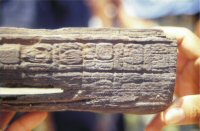
Figure 19: The Redención del Campesino box
During the 2001 season of the archaeological research project 'The Pomoná kingdom and its hinterland' conducted in eastern Tabasco, Mexico, we were informed of the existence of an inscribed wooden box in a locality near Tenosique known as Álvaro Obregón, which lies close to the eastern end of the Redención del Campesino valley. The box proved to be an extraordinary find indeed (Fig. 19). Peter Mathews and Stanley Guenter have worked on these inscriptions and have presented a comprehensive reading of it (Anaya Hernández et al. 2002), thus I will not deal in great detail with the inscribed text. Nevertheless I want to call to attention to the titles and names that appear in that text.

Figure 19: The Redención del Campesino box
First, the two shorter sides of the box the title Ochk'in Kaloomte', or 'West Kaloomte' appears (pV-pW and pX-pY). The title Kaloomte is the highest personal title that is known from the Maya inscriptions, and was given only to a high king. Second, the name of a high-ranking individual appears mentioned twice (pL-pK2 and pU1). Mathews and Guenter read this name as Tajom U Haab, a quasi-identical name as the one appearing on Piedras Negras Panel 2, which reads Tajom U K'ab' Tuun who also has the title Ochk'in Kaloomte (see preliminary field drawing at http://www.mesoweb.com/reports/box/index.html.
In the wooden box the first occurrence of Tajom U Haab's name is preceded by the glyph yichnal 'in the presence of...' (pK1) which normally appears between the name of the local ruler and his overlord. In the second instance the name is preceded this time by the expression u kab' jiiy, 'he supervised it' (pT1). Both expressions imply a hierarchical relationship and are undoubtedly declarations of political subordination (Grube and Martin 1998).
The significance of this text lies in the implications of political subordination that existed between the local ruler of the valley and the Piedras Negras king. The box itself could well have served the same symbolic function that Golden (1999) ascribes to the lintels of La Pasadita, a means of cementing the relationship between the king and his under-lords, which would in turn safeguard the integrity of their domain.
© Internet Archaeology/Author(s)
University of York legal statements | Terms and Conditions
| File last updated: Tue Mar 7 2006